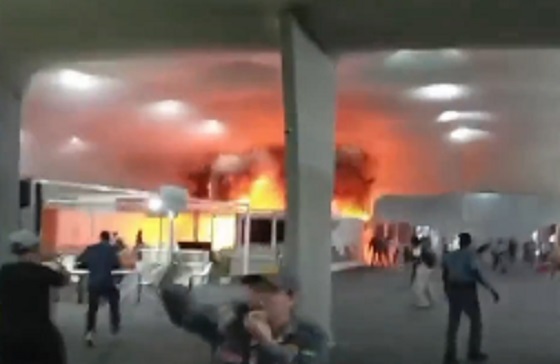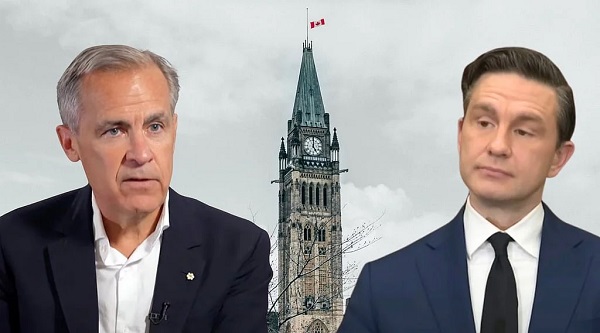Opinion
Taxpayers DO have the right to remain silent

A taxpayer-friendly unanimous Federal Court of Appeal ruling came out this week in MNR v Cameco [2019 FCA 67]. At issue was whether or not the Minister (through the CRA) has the authority to compel oral answers to oral questions from taxpayers or their employees.
In his ruling, Justice of Appeal Rennie stated “…the Minister does not have the power to compel a taxpayer to answer questions at the audit stage…”, however, it may be in the best interest of the taxpayer to provide reasonable answers to reasonable questions in order to expedite the process. The full entire ruling can be found and read here
This ruling simply re-confirms, that even in an audit, you (and your staff) have the right to remain silent, and that the Minister’s powers are limited to physical evidence.
An exception to this is you are required to provide assistance in locating and providing that physical evidence, which may need to be orally.
Personally, when dealing with a very large number of taxpayers on our own office, we want to be certain that the file that the CRA is talking about is the same file in front of us. As such, we are a firm believer in the Canadian Home Builders’ Association motto that is ironically supported by the Government of Canada: “Get it in Writing.”
I am not advocating answering no questions, as the Minister (CRA) still has the ability to issue reassessments, thereby shifting burden of proof to the taxpayer further to disprove the reassessment.
I am, however, advocating at a minimum to get those questions detailed, and in writing. This will help to provide clarity and allow for proper thought in your answers as opposed to stating something with unintended consequences.
Here is a little example of what happens when you don’t get it in writing: in my dark-side days as a field auditor with the (then called) CCRA, we used to ask prying questions that the taxpayer had no idea they were answering.
For example, in one particular circumstance I was reviewing a file where it was suggested that the taxpayer was doing under-the-table cash jobs. This meant I would have to be creative in figuring out the taxpayer’s cost of living, and ruling out other sources of income.
Meeting in a quiet restaurant in a small Saskatchewan town, I was eventually able to have the taxpayer relaxed enough to think that we were having a normal conversation. Just a couple of ‘Riders fans that aren’t a fan of Ottawa, but hey, I have a job to do. When the taxpayer started complaining about the government, I joined in:
“Hey, I hear you. I’m not some suit from Ottawa. I’m from Regina. I mean both the feds and the province already get enough out of me from tax on my smokes.”
I don’t smoke.
The taxpayer didn’t know that, but the anger was timely because the province had just raised up the cigarette tax the previous year so packs were well over $6 a pack.
“Yeah I know”, the taxpayer said, “I smoke a pack a day”.
Music to my ears as a tax auditor, the taxpayer just told me that they need ($6 x 365) = $2,190 of after-tax income just to feed their cigarette habit.
I continued, “That’s terrible! Between getting our money on that, and getting it at the casino, it’s just crazy how much they make it hard to enjoy our weekends.”
“Yeah, I don’t win nuthin’ at the casino either,” the taxpayer stated.
To me I heard ‘I didn’t have any non-taxable casino winnings. In fact, the taxpayer likely had lost money in the year. This means the taxpayer needed to have more disposable income to gamble.’
The conversation continued for a good 30 minutes. Once I was armed with more knowledge of the taxpayer’s lifestyle and spending habits, I went to work. Bank statements, receipts, mileage information, fuel costs, type of vehicle, etc.
We would use information tools not only from Statistics Canada for price of fuel in different regions, we would also use websites like www.fueleconomy.gov that provide different estimated fuel consumption based on type of use and mileage going back to cars from the 1980s. Then we work backwards to see if the numbers made sense with respect to the taxpayer’s vehicle and costs.
When it was all said and done, I used the results of our conversation against the taxpayer. When I was finished, I found over $30,000 in an income variance between the taxpayer’s living costs and change in net worth compared to what was reported. Not only that, but the taxpayer had already backed themselves into a corner because of the questions that were answered which I had documented.
My guess is that in conclusion, the taxpayer thought they should have got the questions in writing instead of meeting me at a restaurant.
—
Cory G. Litzenberger, CPA, CMA, CFP, C.Mgr is the President & Founder of CGL Strategic Business & Tax Advisors; you can find out more about Cory’s biography at http://www.CGLtax.ca/Litzenberger-Cory.html
Daily Caller
Trump Gives Zelenskyy Until Thanksgiving To Agree On Peace Deal, With U.S. Weapons And Intel On The Line


From the Daily Caller News Foundation
President Donald Trump is turning up the heat on Ukrainian President Volodymyr Zelenskyy to accept a peace deal to end his war with Russia, and has set a deadline with potential consequences.
The U.S. is warning that certain weapons shipments and intelligence sharing could be at risk if Zelenskyy does not play ball with Trump’s peace proposal, Reuters reported on Friday. The president set a Thanksgiving deadline for Zelenskyy to sign off on the details. Speaking with Brian Kilmeade on Fox News Radio, Trump confirmed that date, saying that while deadlines can be extended, “Thursday is it.”
Speaking with Brian Kilmeade on Fox News Radio, Trump confirmed that, though deadlines can be extended, “Thursday is it.”
Zelenskyy signaled his willingness to discuss concessions outlined in the proposed peace deal despite objections from other European leaders over the terms, and said in a post on X that his whole government is at work on the individual points. However, the Ukrainian leader also said in a Friday video statement that the U.S. has put Ukraine in a position of “either losing its dignity or the risk of losing a key partner.”
Russian President Vladimir Putin, on the other hand, said Friday Trump’s plan could “form the basis” for a final peace agreement.
A U.S. official told the Daily Caller News Foundation they “will not comment on sensitive peace discussions that may or may not have happened.”
“President Trump is working with both sides to end the war as quickly as possible, which has gone on for far too long, with too many senseless deaths,” the official said. “This would have never happened if he was President.”
Zelenskyy most recently has been embroiled in a corruption scandal, as the National Anti-Corruption Bureau of Ukraine launched a probe into Zelenskyy’s business partner, who allegedly laundered $100 million from Ukraine’s nuclear energy company.
“It was strongly implied to the Ukrainians that the United States expects them to agree to a peace deal,” another U.S. official told the DCNF. “Any changes will be decided upon by the President himself.”
The Ukrainian leader has been working to shore up support in Europe as well, most recently signing a deal with France to obtain 100 Rafale jets for its air force. The deal also included anti-air equipment, drones and other munitions.
The Trump administration has worked to offload direct military support for Ukraine to partners in Europe, with NATO agreeing to purchase U.S. weapons to then ship to Ukraine, instead of the American government delivering directly.
Daily Caller
MTG Says She’s Resigning From Office


From the Daily Caller News Foundation
Republican Georgia Rep. Marjorie Taylor Greene announced Friday that she will step down from Congress.
Greene took to social media to announce her final day in office. Greene released the lengthy statement on X telling supporters, “I will be resigning from office with my last day being January 5, 2026.”
My message to Georgia’s 14th district and America.
Thank you. pic.twitter.com/tSoHCeAjn1— Marjorie Taylor Greene 🇺🇸 (@mtgreenee) November 22, 2025
Greene released a statement outlining her frustrations with both parties, portraying her decision as the culmination of years of disillusionment with Washington’s political culture. Greene said she has always tried to speak for “the common American man and woman,” arguing that her outsider posture made her an unwelcome presence in the capital.
“Americans are used by the Political Industrial Complex of both Political Parties, election cycle after election cycle, in order to elect whichever side can convince Americans to hate the other side more. And the results are always the same. No matter which way the political pendulum swings, Republican or Democrat, nothing ever gets better for the common American man or woman,” Greene wrote.
In her statement, Greene framed her five years in Congress as a fight to advance the “America First” agenda she embraced in 2020.
“I ran for Congress in 2020 and have fought every single day believing that Make America Great Again meant America First. I have one of the most conservative voting records in Congress defending the 1st amendment, 2nd amendment, unborn babies because I believe God creates life 1 at conception, strong safe borders, I’ve fought against Covid tyrannical insanity and mandated mass vaccinations, and I’ve never voted to fund foreign wars,” Greene added.
President Donald Trump cut support for Greene and called her a “traitor” after she criticized his foreign policy decisions and refused to withdraw her name from a petition demanding the release of the Jeffrey Epstein files. Greene fired back, calling herself a “patriot” for siding with Epstein’s victims and defending the America First agenda.
-

 Health2 days ago
Health2 days agoCDC’s Autism Reversal: Inside the Collapse of a 25‑Year Public Health Narrative
-

 Crime2 days ago
Crime2 days agoCocaine, Manhunts, and Murder: Canadian Cartel Kingpin Prosecuted In US
-

 Health2 days ago
Health2 days agoBREAKING: CDC quietly rewrites its vaccine–autism guidance
-

 National2 days ago
National2 days agoPsyop-Style Campaign That Delivered Mark Carney’s Win May Extend Into Floor-Crossing Gambits and Shape China–Canada–US–Mexico Relations
-

 Energy2 days ago
Energy2 days agoHere’s what they don’t tell you about BC’s tanker ban
-

 Daily Caller2 days ago
Daily Caller2 days agoBREAKING: Globalist Climate Conference Bursts Into Flames
-

 Bruce Dowbiggin2 days ago
Bruce Dowbiggin2 days agoBurying Poilievre Is Job One In Carney’s Ottawa
-

 Great Reset1 day ago
Great Reset1 day agoEXCLUSIVE: A Provincial RCMP Veterans’ Association IS TARGETING VETERANS with Euthanasia






